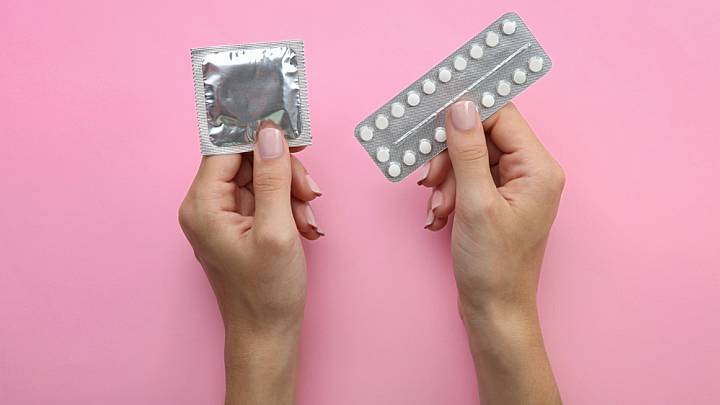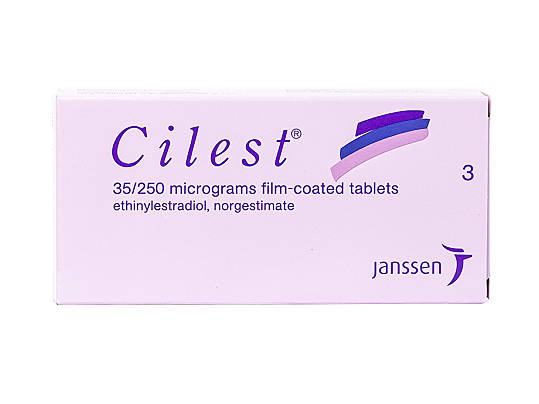Types of Contraceptives

Medically reviewed by
Dr Kathryn BasfordLast reviewed: 17 May 2019
A guide to the different methods of contraception

Key takeaways
There are two main types of contraception: hormonal and barrier methods
Each method of contraception has a different level of effectiveness
Some contraceptives can be bought in shops but to get most types, you’ll need the help of a doctor or nurse
Only some methods of contraception also protect you against sexually transmitted infections (STIs)
Contraception is used when you want to have sex and not get pregnant. There are many different types, and some are more effective than others. Some methods of contraception will also protect you from STIs. You can only get most types of contraception with the help of a doctor or nurse, except for condoms, spermicides, and emergency contraception.

No results found.
Please check your spelling or try another treatment name.
What methods of contraception are there?
Contraception works in a number of ways, by stopping:
- an egg from being released into the womb
- sperm from reaching the egg
- a fertilised egg from implanting in the womb
The different methods include:
- barrier: these stop sperm reaching an egg
- long-acting reversible contraception (LARC): these last for a long period of time (often years), and may use one or more of the above ways to stop pregnancy. These may or may not use hormones.
- hormonal: these use lab-made hormones to make changes to your body that prevent pregnancy
- permanent: this involves a doctor making a permanent change to your body
- natural family planning: this is when you pay close attention to your periods and only have sex when you are least likely to get pregnant
- emergency contraception: this is used to stop pregnancy after you have unprotected sex
A condom is the most popular contraception method that stops you from getting sexually transmitted infections (STIs).
Contraceptive pill
The contraceptive pill (often just called ‘the pill’) is the most popular form of female contraception. It’s a tablet containing lab-made hormones that you take once a day. The hormones make changes to your body that stop you getting pregnant.
There are two different types of the pill: the combined pill and the mini (progesterone-only) pill. The combined pill contains oestrogen and progesterone, and the mini pill only contains progesterone.
The pill is more than 99% effective when taken correctly (technically called ‘perfect use’). However, it can be difficult to remember to take the pill as instructed, and this is called ‘typical use’. With typical use, the pill is only 91% effective.
You need a doctor’s prescription to get the pill. There is a range of different brands, and a doctor can suggest the most suitable one for you.
The pill offers no protection against STIs.
Male condom
A male condom is a covering worn over the penis to stop sperm getting into the womb. Condoms are most commonly made of latex, but other types are available.
The condom is the most common form of male contraception. People of any age can buy them from a variety of shops, including pharmacies and supermarkets. You can also get them for free in many places, including contraception clinics and sexual health clinics.
With perfect use, male condoms are 98% effective at preventing pregnancy, but this drops to 82% with typical use.
A condom is the most popular form of contraception that also helps to avoid getting STIs.
Female condom
A female condom is worn inside the vagina and stops sperm getting into the womb. Like male condoms, they are most commonly made of latex but other types are available.
They’re not found in as many places as male condoms but are sold in pharmacies and supermarkets. You can also get them at most contraception clinics and sexual-health clinics.
The female condom is 95% effective with perfect use and 79% effective with typical use.
As with the male condom, a female condom will help to avoid getting STIs.
Diaphragm
A diaphragm is placed inside the vagina to cover the lowest part of the womb (the cervix) to stop sperm getting in. It’s made of soft silicone and is shaped like a shallow cup. It must be used with spermicide (commonly a gel or cream) which slows down the movement of sperm.
You insert it before you have sex and should leave it in place for at least 6 hours afterwards. You should remove it within 24 hours of inserting to avoid getting bacterial infections.
Depending on the material and type of diaphragm, it can be reused many times.
Even though you don’t need a doctor’s prescription to get a diaphragm, a doctor will be able to tell you if the diaphragm is right for you. They will fit the diaphragm for you and teach you how to put it in place.
With perfect use, the diaphragm is 94% effective. With typical use, it’s 88% effective.
Despite being a barrier method, the diaphragm does not protect against STIs.
Cervical cap – FemCap
The cervical cap (sold as FemCap) is a silicone cup, similar to a diaphragm but smaller. It also needs to be used with a spermicide. The cervical cap must remain in the vagina at least 6 hours after sex and should be taken out within 48 hours.
Even though you can buy cervical caps without seeing a doctor or nurse, it’s a good idea to talk to one about whether the cap is suitable for you. They can also make sure that you fit it properly, and show you how to use it.
The cervical cap is 92 to 96% effective with perfect use and 71 to 88% effective with typical use.
Cervical caps do not protect against STIs.
Contraceptive coil
The contraceptive coil is a long-acting reversible method of contraception. It is a plastic, T-shaped device fitted in the vagina by a doctor or nurse. There are two types of coil: the intrauterine device (IUD) and the intrauterine system (IUS).
The IUD releases copper into the womb and is also known as the copper coil. The IUS releases lab-made progesterone and is also called the hormonal coil.
Once it’s fitted, the IUS can stay in place for 3 or 5 years (depending on the brand) and the IUD for 5 or 10 years. Both coils can be removed at any time by a doctor or nurse.
The effectiveness rate for both is above 99%.
IUDs can also be a form of emergency contraception if the device is inserted within 5 days after unprotected sex.
Coils offer no protection from STIs.
Contraceptive implant
Another long-acting reversible method of contraception, the implant is a matchstick-sized piece of plastic, inserted under the skin on your upper arm. It can be safely left in place for 3 years but can be taken out at any time. The implant must be fitted and removed by a doctor or nurse.
The implant works like the mini pill by releasing lab-made progesterone. It’s 99.95% effective.
It does not protect against STIs.
Contraceptive injection
The contraceptive injection is a shot of lab-made progesterone, the hormone that’s in the mini pill. The injection lasts for 12 weeks and once given, it cannot be reversed, so you are effectively infertile for the next 3 months.
The contraceptive injection must be given by a doctor or nurse, who will discuss whether it’s suitable for you.
Injectable contraceptives are more than 99% effective with perfect use, 94% with typical use. The main thing that makes perfect use more difficult is remembering to get a new injection every 3 months.
Like other hormonal methods of contraception, injections do not protect from STIs.
Vaginal ring
The vaginal ring is a piece of circular plastic that you place in the vagina. The ring works in the same way as the combined pill, releasing progesterone and oestrogen.
You put the ring in place for 21 days, remove it for 7 (when you’ll bleed) and then replace it with a new ring.
The vaginal ring is more than 99% effective with perfect use, and 91% effective with typical use.
You need a doctor's prescription to get the ring. It does not protect from STIs.
Contraceptive patch
The contraceptive patch is the same thing as the contraceptive pill but in a plaster-like patch worn on the skin. It provides the same protection against pregnancy.
The patch can be worn on different parts of the body. You need to change it once a week. After wearing patches for 21 days, you do not wear one for 7 days (when you’ll bleed). You then start again with a new patch.
You need a doctor’s prescription to get the patch.
The patch is over 99% effective with perfect use and 91% with typical use. It does not protect from STIs.
Emergency contraception
Emergency contraception is used to stop you getting pregnant after you’ve had unprotected sex. It’s not recommended as a regular method of contraception.
The morning-after pill is the most common form of emergency contraception. It’s a single pill containing synthetic hormones that stop or slow down an egg's release (ovulation). An IUD can also be used as emergency contraception.
Emergency contraception needs to be used within 3 or 5 days of unprotected sex (depending on the method and brand).
You can get the morning after pill through your GP, sexual health clinic, or pharmacist. You’ll need to see a doctor or nurse to get an IUD fitted.
Sterilisation
Sterilisation is an operation by a doctor which permanently protects against pregnancy. It’s available to both men and women.
In men, the procedure is called a vasectomy. The tubes that carry sperm are cut or sealed. In women, the fallopian tubes are clipped or tied so eggs cannot move into the womb.
Women can also have non-surgical sterilisation. This is when an implant is placed in each fallopian tube to create scars that eventually block each tube. The scars may take up to 3 months to completely block the tubes, so you need to use another contraception method in the meantime.
Sterilisation offers more than 99% protection against pregnancy. In rare cases, blocked tubes grow back and reconnect, or tubes are not effectively blocked.
Sterilisation does not provide any protection against STIs.
Natural family planning
Natural family planning is when a woman monitors her periods and avoids having sex when she is fertile.
With this method, you track 3 main changes to your body: your temperature, fluids from your cervix (the lowest part of the womb), and your menstrual cycle length. Protection rates are higher when you use all 3 methods in combination.
This type of contraception's effectiveness varies between 76% (typical use) and 95 to 99% (perfect use). It does not protect against STIs.
What if I don't use any contraception?
If contraception is not used, approximately 85% of sexually active women will become pregnant within one year.
If you do not use a condom, you also have a much higher chance of getting an STI.
Which method of contraception is best for me?
Your choice of contraception will likely depend on your health, lifestyle, personality, and relationships. Sometimes finding the right type for you will mean trying out a method and switching if it does not feel suitable. There might be some types of contraception that your doctor or nurse will recommend that you do not use, depending on your health or medications.
The effectiveness of contraception often depends on how carefully you use it. It’s a good idea to think about whether you will reliably use the contraception you choose and how effective it will be.

Dr Kathryn Basford is an IMC and GMC registered GP who works with our Irish team here at ZAVA. She graduated from the University of Manchester and completed her GP training at Whipps Cross Hospital in London.
Meet our doctorsLast reviewed: 17 May 2019
-
Brook. My Contraception Tool. [online] Available at: https://www.brook.org.uk/topics/contraception/ [accessed 17th May 2019].
-
Family Planning Association. My Contraception Tool. [online] Available at: https://legacy.brook.org.uk/our-services/start-my-contraception-tool [accessed 17th May 2019].
-
Family Planning Association. Contraception. [online] Available at: https://www.sexwise.org.uk/contraception [accessed 17th May 2019].
-
NHS (2019). Which method of contraception suits me? [online] Available at: https://www.nhs.uk/conditions/contraception/which-method-suits-me/ [accessed 17th May 2019].
-
NHS (2017). How effective is contraception at preventing pregnancy? [online] Available at: https://www.nhs.uk/conditions/contraception/how-effective-contraception/ [accessed 17th May 2019].
Contraceptive pills are a reliable way of reducing your risk of getting pregnant from sex. ZAVA offers most common brands of pill, so you can order your preferred brand by visiting our contraceptive pill service page.









